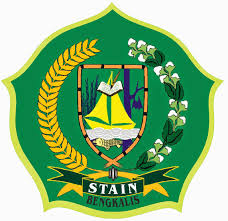Analisis Semiotika Video Edukasi Darurat Eksploitasi Anak
DOI:
https://doi.org/10.56633/kaisa.v5i1.1071Keywords:
child exploitation, educational video, semiotics, visual communication, social campaignAbstract
Exploitation of children under the age of 13 in Indonesia is a serious social problem, covering economic, sexual and social exploitation. This research aims to design an educational video titled "Emergency Child Exploitation" that uses visual media, particularly videography, as an effective communication tool to raise public awareness. The approach used in this research is a semiotic analysis of the visual and narrative elements in the video. Through Roland Barthes' semiotic theory, the video is analyzed to reveal the denotative and connotative meanings contained in symbols, colors, gestures, sounds, and other visual elements. The results of the analysis show that the semiotic elements in this video, such as children playing, scavengers, and crowded streets, provide deep meanings about freedom, economic inequality, and the pressures of urban life. This research not only produces a video as a social campaign tool, but also enriches academic studies in visual communication studies. This educational video is expected to be an effective tool in building public awareness and reducing child exploitation through a meaningful visual approach.
References
Latifah, I Ulil, and Nova Kristiana. n.d. “Analisis Visual Karakter Gatotkaca Dalam Game Mobile Legends Bang Bang.”
Makbul, M. 2021. “Metode Pengumpulan Data dan Instrumen Penelitian.” Makassar.
Rukajat, Ajat. 2018. “Pendekatan Penelitian Kuantitatif (Quantitative Research Approach).” Yogyakarta.
Sampurna, Angelia, Monica Tandian, Viviana Huang, Ruth Florescia Simanjuntak, and Rustono Farady Marta. n.d. “Implementasi Total Branding Dalam Perspektif Semiotika Pemasaran.”
Siregar, Serdima. 2024. “Implementasi Metode Sha-12 Untuk Mendeteksi Orisinalitas File Video.” Buletin Ilmiah Informatika Teknologi 2, no. 2: 70–79. https://doi.org/10.58369/biit.v2i2.51.
Suparmo, Ludwig. 2017. “Semiotics In Signs, Symbols And Brands (Semiotika Dalam ‘Tanda’, Simbol Dan Merek).”
Widyasari, Widyasari, Sri Wulandari, Samuel Rihi Hadi Utomo, Sharah Shabina, and Brilliant Firdaus Ramadhani. 2023. “Perancangan Animasi Edukasi Minum Susu ‘Milkaya’ Dengan Tema Kebudayaan Reog Ponorogo.” ANDHARUPA: Jurnal Desain Komunikasi Visual & Multimedia 9, no. 01: 74–88. https://doi.org/10.33633/andharupa.v9i01.7158.
Roinah, Sofiani, I. K., Susanti, T., Sumarni, T., Mahsuri. 2024. "Blended Learning to Enhance Productive Skills". International Journal of Innovative Research in Multidisciplinary Education 3, No.10 : 1602-1606
Downloads
Published
Issue
Section
License
Copyright (c) 2025 Farelino Arsyi Vernanda Purwanto, Widyasari, Aryo Bayu Wibisono

This work is licensed under a Creative Commons Attribution-NonCommercial-ShareAlike 4.0 International License.

Authors who publish with Kaisa: Jurnal Pendidikan dan Pembelajaran agree to the following terms:
- Authors retain copyright and grant the journal right of first publication with the work simultaneously licensed under a Creative Commons Attribution-NonCommercial-ShareAlike 4.0 International License (CC BY-NC-SA 4.0) that allows others to share the work with an acknowledgment of the work's authorship and initial publication in this journal.
- Authors are able to enter into separate, additional contractual arrangements for the non-exclusive distribution of the journal's published version of the work (e.g., post it to an institutional repository or publish it in a book), with an acknowledgment of its initial publication in this journal.
- Authors are permitted and encouraged to post their work online (e.g., in institutional repositories or on their website) prior to and during the submission process, as it can lead to productive exchanges, as well as earlier and greater citation of published work (See The Effect of Open Access).









